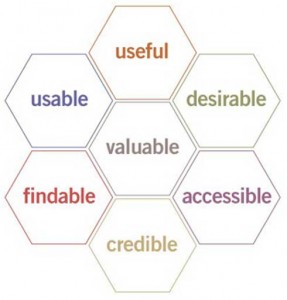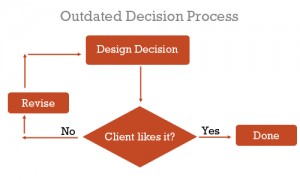01 Aug How User Experience (UX) Affects SEO
Design is something that people have been doing for centuries, and there is a large body of relevant knowledge about UX design that stretches back for decades. I came to UX design from a human factors, or ergonomics, background—a discipline that really got started during World War II as a result of studying how people used tools to help them work and fight more effectively. Ergonomics considers biology, psychology, the surrounding environment, and other disciplines as the foundation for design.
Google’s philosophy states “Focus on the user and all else will follow.” Peter Morville represents this through
- Useful. As practitioners, we can’t be content to paint within the lines drawn by managers. We must have the courage and creativity to ask whether our products and systems are useful, and to apply our knowledge of craft + medium to define innovative solutions that are more useful.
- Usable. Ease of use remains vital, and yet the interface-centered methods and perspectives of human-computer interaction do not address all dimensions of web design. In short, usability is necessary but not sufficient.
- Desirable. Our quest for efficiency must be tempered by an appreciation for the power and value of image, identity, brand, and other elements of emotional design.
- Findable. We must strive to design navigable web sites and locatable objects, so users can find what they need.
- Accessible. Just as our buildings have elevators and ramps, our web sites should be accessible to people with disabilities (more than 10% of the population). Today, it’s good business and the ethical thing to do. Eventually, it will become the law.
- Credible. Thanks to the Web Credibility Project, we’re beginning to understand the design elements that influence whether users trust and believe what we tell them.
- Valuable. Our sites must deliver value to our sponsors. For non-profits, the user experience must advance the mission. With for-profits, it must contribute to the bottom line and improve customer satisfaction.
 Peter Morville User Experience Factors
Peter Morville User Experience Factors
If it worked for them, then why shouldn’t we apply it too? People keep asking me, “How is UX rated?”
That’s the wrong question. What you really need to ask is: How can I improve my visitor’s experience?
Let’s look at an example: the web form. When designing a form, ergonomics would inform the design by considering the following:
- The physical attributes of users—These would inform color choice and coding for accessibility by people who are physically impaired and the appropriate controls to use.
- How people scan pages—We can draw on eyetracking research to inform the layout of forms.
- How people complete online forms—This knowledge helps us to define the appropriate relationship between a label and the corresponding control on various devices.
More specific knowledge—perhaps in the form of personas that have derived from research with the target audience—would help inform our choice of the optimal language to use in a user interface and what Help content to provide.
A Shift of Focus?
Describing and justifying the importance of designing and enhancing the user experience almost seems unnecessary. We could simply say, “It’s important because it deals with our users’ needs,” and everyone would probably be satisfied with that.
However, those of us who worked in the Web design industry prior to the codification of user-centered design, usability and Web accessibility would know that we used to make websites differently. We built interaction based on what we thought worked — we designed for ourselves. The focus was on aesthetics and the brand, with little to no thought of how the people who would use the website would feel about it. Before our clients (and we) understood the value of user-centered design, we made design decisions based on just two things: what we thought was awesome and what the client wanted to see.
 There was no science behind what we did. We did it because the results looked good, because they were creative (so we thought) and because that was what our clients wanted.
There was no science behind what we did. We did it because the results looked good, because they were creative (so we thought) and because that was what our clients wanted.
But this decade has witnessed a transformation of the Web. Not only has it become more ubiquitous — the Web had at least 1.5 billion users globally in 2008 — but websites have become so complex and feature-rich that, to be effective, they must have great user experience designs.
Additionally, users have been accessing websites in an increasing number of ways: mobile devices, a vast landscape of browsers, different types of Internet connections.
User experience design won’t work in every situation for every user because, as human beings, we are all different. What works for one person might have the opposite effect on another. Consider it even when you are reading the latest web designs trends or graphics. The best we can do is design for specific experiences and promote certain behaviors, but we can’t manufacture, impose or predict the actual experience itself.
User Experience is a bit harder to measure for return on investment than keyword ranking, you can go deep down in a full time site like UXMatters. However, it can be done. Google’s Panda updates focus on content quality measured by click-through (does the user select the page from the search results), bounce rate (does the user do anything on the page), and conversion (does the user indicate that their information need has been solved). Relevant user experience data points from most site analytics programs would be: unique visitors, their social actions, the number of pages visited, the average time on page (exclude the bounces), bounce rate, exit rate, top content and top landing pages.


